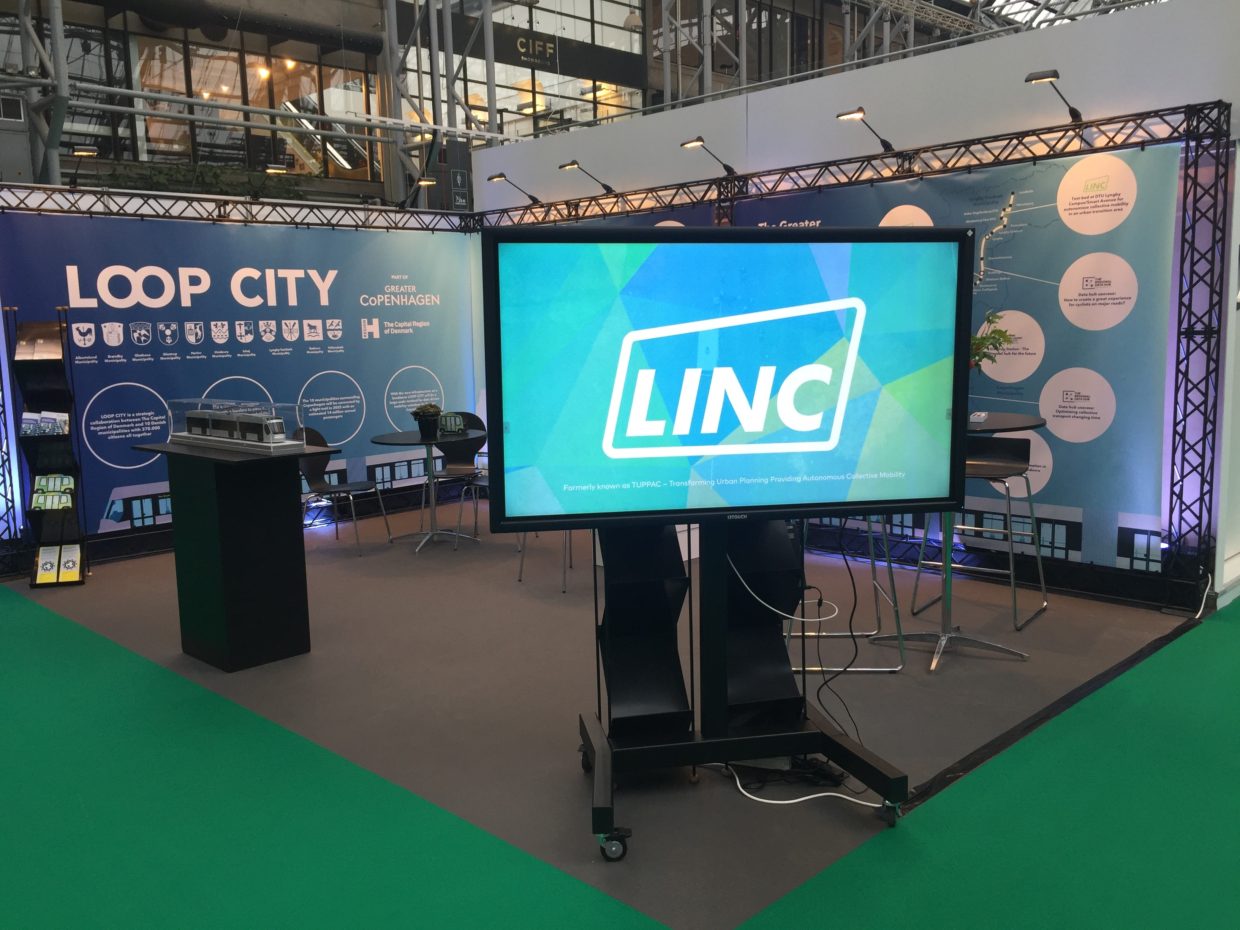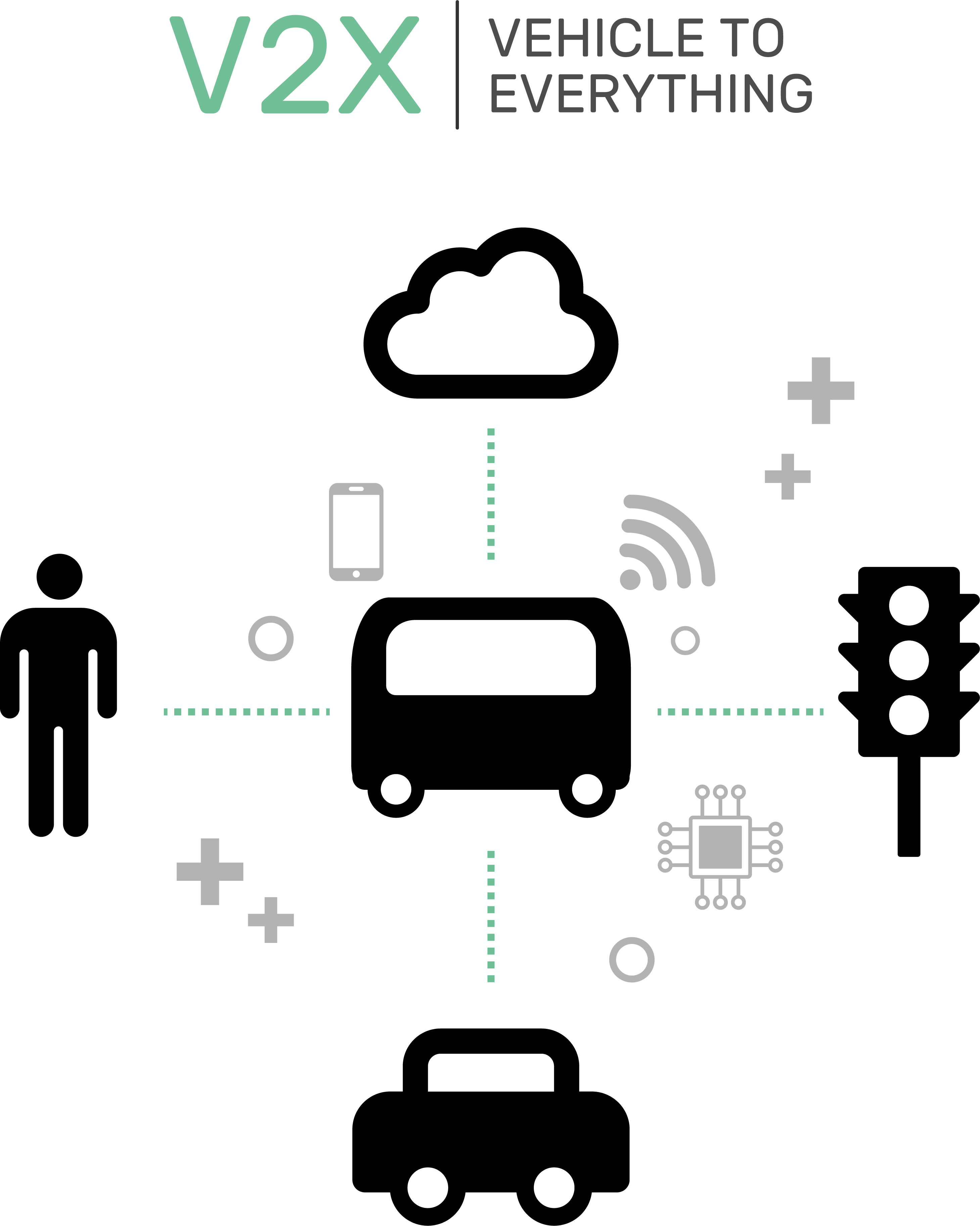
Self-driving transport was a hot topic at ITS World Congress 2018
Scroll ned for at læse mere

Scroll ned for at læse mere
More than 400 exhibitors, 10,000 visitors and 4,000 delegates came together to explore the most innovative trends within intelligent transport systems (ITS) at the ITS World Congress. This year the largest annual international congress was held on 17-21 September 2018 at Bella Center Copenhagen.
The LINC-TUPPAC project is testing self-driving shuttles at two test sites in Denmark and the congress was a welcome occasion both to tell the world about the project and to learn more about tomorrow’s development of self-driving shared mobility. We asked Project Manager Kenneth Jørgensen about the key trends and take-aways from this year’s congress.
All predictions indicate that our personal travel will pivot dramatically over the next 25 years toward self-driving vehicles. The change will most likely happen more quickly and with more significance in the cities.
“The vision for future transport is frictionless, self-driving, personalized travel on demand, but at the congress the major pitfall of this vision was not discussed so much. Namely that the vision can potentially increase transport leading to higher energy consumption and more congestion. This stresses that development of shared transport, like self-driving shuttles in the LINC-TUPPAC project, seems crucial to providing a competitive alternative to people buying their own self-driving car,” says Kenneth Jørgensen.
This point of view is supported by recent statistics from the Danish Road Directorate. They foresee that self-driving vehicles will increase traffic intensity by 14 percent in the Copenhagen metropolitan area and time delays will increase by 15 percent.
“Selvkørende biler”. Vejdirektoratet, December 2017 (in Danish).
Throughout the congress there were no examples of fully operational self-driving shuttles in mixed traffic. Up until now the operation of shared shuttles has primarily focused on trials in controlled test environments, such as on campuses and routes of around 2-3 kilometers in city-settings, following fixed routes and schedules. To reach the full potential of self-driving shuttles on-demand in cities, the shuttles and software still need development.
Nevertheless, the roll-out of self-driving shared transport as a first-/last mile service is expanding to more complex environments in mixed traffic, as well as on a larger-scale that includes residential areas.
“Most of the self-driving shared vehicles in operation today operate in lanes dedicated to the vehicle, but applications that enable self-driving shuttles to operate in mixed-traffic are underway,” says Kenneth Jørgensen.
Self-driving shared shuttles are not truly self-driving yet – they still have a steward onboard. The onboard attendant is responsible for monitoring the driving and answering passenger questions.
“The ambition for the future is to remove stewards from the shuttles, but often national regulation prohibits this. However, the trend is that cities and regulators are becoming increasingly open to changing regulations,” says Kenneth Jørgensen.
“One of the conclusions from the congress was that further studies of user acceptance of self-driving transport and behavioral studies are needed. User acceptance is a prerequisite to successfully implementing self-driving transport on a wider scale,” says Kenneth Jørgensen.
To support this developers and manufacturers are increasingly turning to artificial intelligence to personalize and enhance customer experience in self-driving transport, but it is still difficult to find examples of actual use and feedback from passengers.
“This will probably be a new field of development between the public and private sector. Artificial intelligence has been discussed among LINC-TUPPAC project partners, but it has not yet been decided whether it could be a part of one of the test-beds,” says Kenneth Jørgensen.
Another emerging trend is vehicle-to-everything (V2X) communication. This trend focuses on the vehicle passing on information to other entities to ensure e.g. road safety, traffic efficiency and energy savings. V2X communication uses WLAN technology and handles e.g. traffic data, weather data, maintenance data and data about accidents separately. The trend is that data should be interoperable and based on cellular networks.
“5G network can be utilized to incorporate more advanced services to vehicles, for instance passing data about traffic conditions from a self-driving shuttle to any entity that may affect the vehicle, and vice versa,” says Kenneth Jørgensen about the emerging trend.
This ability is referred to as cellular V2X (C-V2X). The vision is that one or more cloud services in the future should combine data from individual entities / vehicles to form an ecosystem with integrated services and data.
